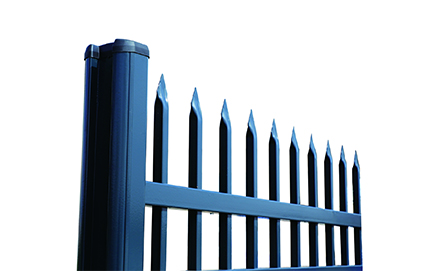Safety Designs for Stair and Balcony Railings in Residential Spaces
Oct . 18, 2024 18:31
Stair and Balcony Railings A Blend of Safety and Aesthetics
When designing a home or a commercial space, the choice of stair and balcony railings is often overlooked. However, railings are a critical component of any building, serving both safety and aesthetic purposes. This article will explore the various types of stair and balcony railings, their materials, design considerations, and the importance of incorporating them into architectural plans.
Safety First
The primary function of stair and balcony railings is to ensure safety. These structures help prevent falls, providing necessary support and stability as individuals navigate heights. Building codes dictate specific height and spacing requirements to ensure that railings effectively serve their purpose. For instance, stair railings should typically be installed at a height of 34 to 38 inches above the stairs, while balcony railings need to be at least 42 inches high. Moreover, balusters (the vertical posts that support the railing) must be spaced closely enough to prevent small children from slipping through, typically no more than 4 inches apart.
Aesthetic Appeal
While safety is paramount, the aesthetic appeal of railings cannot be dismissed. They can enhance the overall design of a space, adding elegance and sophistication. Railings come in various styles, materials, and finishes, allowing homeowners and builders to choose options that complement their architecture. Traditional homes may benefit from ornate wrought iron railings, while modern spaces often utilize sleek glass or stainless steel designs. Additionally, wood railings can create a warm, inviting atmosphere, offering versatility in both indoor and outdoor settings.
Material Choices
When selecting railing materials, it's essential to consider durability, maintenance, and climate conditions.
1. Wood Wood is a classic choice for both indoor and outdoor railings. It offers a natural look but requires regular maintenance to protect against weathering and rot.
2. Wrought Iron Known for its strength and decorative potential, wrought iron railings can be custom designed with intricate patterns. However, they may require periodic painting to prevent rust.
3. Aluminum Lightweight and resistant to corrosion, aluminum is an excellent choice for outdoor balconies and stair railings. Its versatility allows for various finishes, including powder coating.
stair and balcony railings

4. Glass Glass railings provide a modern and unobtrusive look, offering unobstructed views. Tempered glass is often used for safety reasons, as it is incredibly durable and shatter-resistant.
5. Composite Materials Made from a combination of wood fibers and plastic, composite railings are designed to mimic the appearance of wood while providing superior resistance to weather and decay.
Design Considerations
When designing stair and balcony railings, several factors should be considered to strike the right balance between safety and aesthetics.
1. Style The style of the railings should match the overall design of the space. For example, a minimalist design might pair well with sleek metal railings, while a more traditional home could benefit from ornate wooden balusters.
2. Color The color of the railings should either match or complement the existing color palette of the home. Dark railings can create a bold statement, while lighter shades can make a space feel more open.
3. Functionality Consider how the railings will be used. For instance, if children or elderly individuals frequent the area, sturdier designs with lower spacing between balusters might be preferable.
4. Lighting Incorporating lighting into stair or balcony railings can enhance safety and mood. LED lights can be integrated into the railing design, providing illumination for steps and ensuring visibility at night.
Conclusion
In conclusion, stair and balcony railings play a vital role in both the safety and aesthetics of a space. By choosing the right materials, styles, and designs, homeowners and architects can create railings that not only provide security but also enhance the overall aesthetic of a building. It is essential to consider local building codes and safety regulations when designing these structures, ensuring they fulfill both functional and decorative roles. Whether you are renovating an existing space or designing a new one, the careful selection and design of stair and balcony railings should be a priority, as they are integral to the comfort and safety of all who use them.




















